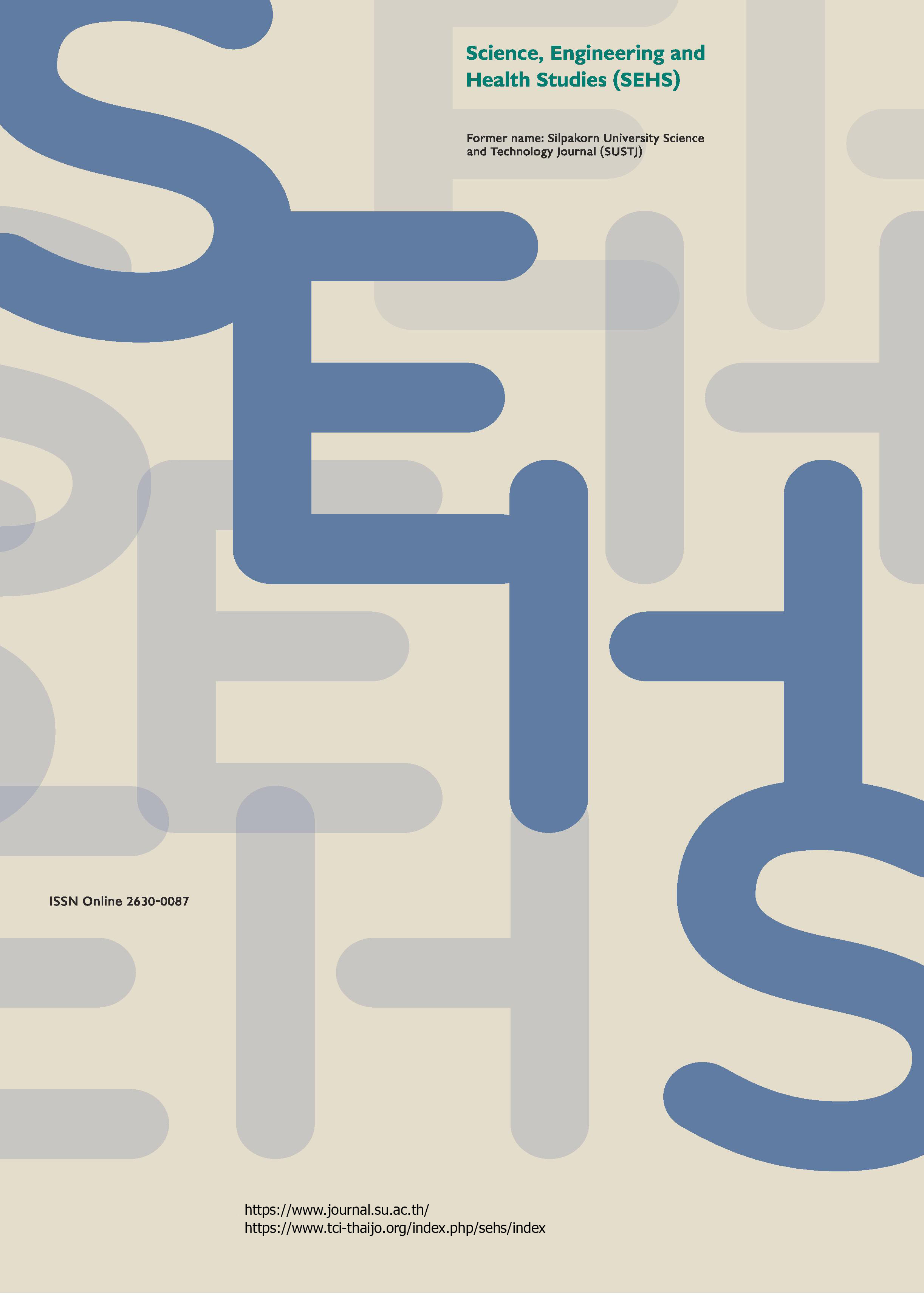Detection of mealybug infestation on the Khasi Mandarin orange plant using electronic nose
Main Article Content
Abstract
Mealybugs pose a serious threat to fruit crops leading to premature leaf and fruit drops which severely affects the yield as well as the quality. Primarily pest detection is done with the help of human/animal scouting, which is cumbersome and prone to error. This paper studies the feasibility of using an electronic nose (E-Nose) for detecting mealybug infestation in Khasi Mandarin orange plants. Plants normally release volatile organic compounds (VOCs) which can act as biomarkers for specific stresses affecting the plant. These VOCs can be analyzed to diagnose the plant. VOCs emanating from leaf samples of both infested and healthy plants were analyzed using a custom-made E-Nose system containing an array of commercially available gas sensors. Dimensionality reduction techniques using principle component analysis, and linear discriminant analysis and optimized classification algorithms like support vector machine and random forest were employed to check for the discriminating capability of the E-Nose system. The technique successfully classified samples belonging to infested and healthy categories in both the classifiers with accuracies of 95.66% and 96.70%.
Downloads
Article Details

This work is licensed under a Creative Commons Attribution-NonCommercial-NoDerivatives 4.0 International License.
References
Azfar, S., Nadeem, A., Alkhodre, A. B., Ahsan, K., Mehmood, N., Alghmdi, T., and Alsaawy, Y. (2018). Monitoring, detection and control techniques of agriculture pests and diseases using wireless sensor network: A review. International Journal of Advanced Computer Science and Applications, 9(12), 424–433.
Barah, P., and Bones, A. M. (2015). Multidimensional approaches for studying plant defence against insects: From ecology to omics and synthetic biology. Journal of Experimental Botany, 66(2), 479–493.
Na Chiangmai, P., Pootaeng-on, Y., and Khewaram, T. (2013). Evaluation of the shade tolerance of moth bean (Vigna aconitifolia) and two tropical legume species. Silpakorn University Science and Technology Journal, 7(1), 19–31.
Cui, S., Inocente, E. A. A., Zhu, H., Acosta, N., Ling, P. P., and Keener, H. M. (2018a). Development of portable E-nose system for early diagnosis of insect-stressed tomato plants. 2018 ASABE Annual International Meeting: Paper no. 1800990. Detroit, Michigan: American Society of Agricultural and Biological Engineers. July 29 – August 1.
Cui, S., Ling, P., Zhu, H., and Keener, H. M. (2018b). Plant pest detection using an artificial nose system: A review. Sensors, 18(2), 378.
Fennell, J., Veys, C., Dingle, J., Nwezeobi, J., van Brunschot, S., Colvin, J., and Grieve, B. (2018). A method for real-time classification of insect vectors of mosaic and brown streak disease in cassava plants for future implementation within a low-cost, handheld, in-field multispectral imaging sensor. Plant Methods, 14, 82.
Ghaffari, R., Hines, E. L., Zhang, F., Leeson, M. S., Iliescu, D. D., and Napier, R. (2011). Detection of diseases and volatile discrimination of plants: An electronic nose and self-organizing maps approach. In Intelligent Systems for Machine Olfaction: Tools and Methodologies (Hines, E. L. and Leeson M. S., Eds.), pp. 214–230. Hershey, PA: IGI Global.
Gondal, D., and Khan Y. N. (2015). Early pest detection from crop using image processing and computational intelligence. FAST-NU Research Journal, 1(1), 59–68.
Gutierrez, A., Ansuategi, A., Susperregi, L. Tubío, C., Rankić, I., and Lenža, L. (2019). A benchmarking of learning strategies for pest detection and identification on tomato plants for autonomous scouting robots using internal databases. Journal of Sensors, 2019, 5219471.
Hazarika, S., Choudhury, R., Montazer, B., Medhi, S., Goswami, M. P., and Sarma, U. (2020). Detection of citrus tristeza virus in mandarin orange using a custom-developed electronic nose system. IEEE Transactions on Instrumentation and Measurement, 69(11), 9010–9018.
Isuwan, A. (2014). Agronomic traits and fruit quality of pineapple with different levels of chicken manure application. Silpakorn University Science and Technology Journal, 8(1), 67–73.
Lampson, B. D., Han, Y. J., Khalilian, A., Greene, J. K., Degenhardt, D. C., and Hallstrom, J. O. (2014a). Development of a portable electronic nose for detection of pests and plant damage. Computers and Electronics in Agriculture, 108, 87–94.
Lampson, B. D., Khalilian, A., Greene, J. K., Han, Y. J., and Degenhardt, D. C. (2014b). Development of a portable electronic nose for detection of cotton damaged by Nezara viridula (hemiptera: pentatomidae). Journal of Insects, 2014, 297219.
Maag, D., Erb, M., and Glauser, G. (2015). Metabolomics in plant–herbivore interactions: Challenges and applications. Entomologia Experimentalis et Applicata, 157(1), 18–29.
Nishad, R., Ahmed, T., Rahman, V. J., and Kareem, A. (2020). Modulation of plant defense system in response to microbial interactions. Frontiers in Microbiology, 11, 1298.
Obsuwan, K., Deesubin, P., Tongam, A., and Juneenat, O. (2021). Influence of paclobutrazol on growth of Dendrobium ‘Sonia Jo Daeng’ under salt stress condition in tissue culture. Science, Engineering and Health Studies, 15, 21030001.
Priyashantha, A. K. H., and Sugirtharan, M. (2021). Heavy metals and pathogenic contamination in vegetable crops through wastewater irrigation and risk reduction in developing countries. Science, Engineering and Health Studies, 15, 21010008.
Rao, C. N., Shivankar, V. J., and Singh, S. (2006). Citrus mealy bug (PLANOCOCCUS CITRI RISSO) management - A review. Agricultural Reviews, 27(2), 142–146.
War, A. R., Paulraj, M. G., Ahmad, T., Buhroo, A. A., Hussain, B., Ignacimuthu, S., and Sharma, H. C. (2012). Mechanisms of plant defense against insect herbivores. Plant Signaling & Behavior, 7(10), 1306–1320.
Zhang, F., Iliescu, D. D., Hines, E. L. and Leeson, M. S. (2011). Tomato plant health monitoring: An electronic nose approach. In Intelligent Systems for Machine Olfaction: Tools and Methodologies (Hines, E. L. and Leeson M. S., Eds.), pp. 231–247. Hershey, PA: IGI Global.


